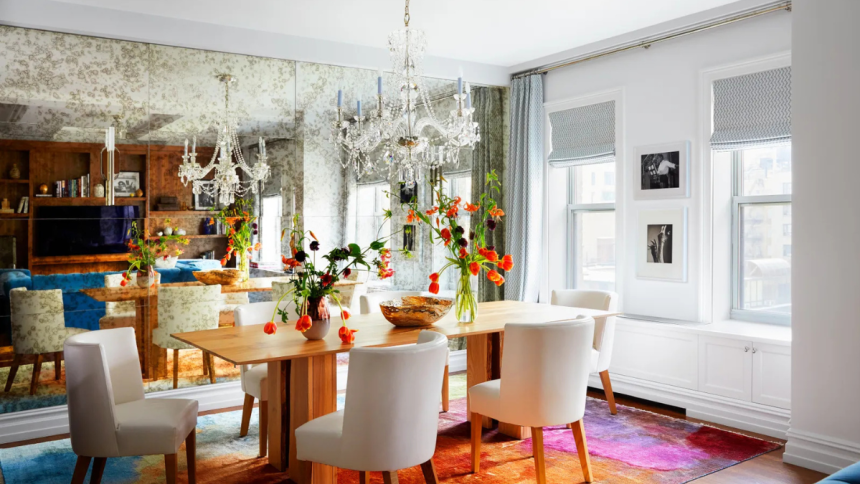A well-arranged restaurant doesn’t just look good, it feels good. When diners walk into a space where the layout breathes, where tables are set with just the right amount of room between them, the experience becomes instantly more pleasant. This “white space,” or the intentional space left open between tables and furniture, plays a quiet yet powerful role in how a restaurant is perceived. It affects the flow, the mood, and even the amount guests spend during their visit.
White space isn’t empty. It holds meaning. It helps customers feel comfortable, reduces noise levels, and guides people through the space without confusion. When layouts are too crowded, guests often feel overwhelmed, rushed, or even trapped. On the other hand, generous spacing between restaurant tables can increase satisfaction and revenue. Studies have shown that tightly packed dining areas lead to fewer return visits, while layouts with more space can raise revenue per table by nearly fifteen percent.
Let’s take a closer look at how this simple design principle, white space, can transform the dining experience from average to exceptional.
The Role of White Space in Restaurant Design
A dining room benefits greatly from clarity. When there’s room to breathe between tables and chairs, the entire space appears more inviting and less chaotic. Sightlines are clearer, making it easier for guests to find their tables and for staff to move efficiently. A thoughtful layout sets the tone before anyone even takes a bite.
More than just functionality, white space contributes to a sense of order. It signals care and cleanliness, and these impressions stick with customers long after the meal ends. A clean, well-spaced room often feels more hygienic, especially important in today’s world where health awareness is high.
It also supports the brand’s message. A restaurant that invests in open, flowing design often positions itself as upscale or quality-focused. Space communicates value, and white space lets the atmosphere shine without clutter.
Optimizing Table Spacing for Different Restaurant Types
Not every restaurant needs the same amount of space per guest. Fast casual places can function with about 12 to 17 square feet per seat, while fine dining establishments often require 16 to 20. It depends on the level of service, the style of food, and the overall experience you aim to provide.
Some owners fall into the trap of squeezing in as many tables as possible, believing more seats will always mean more income. But diners tend to avoid returning to places where they feel cramped. Adding tables may boost capacity on paper, but if people don’t come back, it’s not a lasting strategy.
For smaller venues, there’s a delicate dance between intimacy and comfort. Couples may want privacy, while larger groups or families need accessibility. Using movable dividers or modular layouts can help strike the right balance.
Compliance also matters. Aisles should allow for free movement, especially for staff carrying trays. At minimum, pathways of 900 mm are needed, and seating arrangements should also consider wheelchairs and mobility aids. When guests feel comfortable moving around, service improves and so does satisfaction.
Psychological Impact of White Space on Diners
Restaurants are sensory environments, and too much noise, movement, or crowding can take a toll. When white space is used effectively, the mind relaxes. People feel calmer, less distracted, and more focused on enjoying their meal.
Crowded spaces can trigger stress. A room full of tightly packed tables limits privacy and can make conversation difficult. Giving guests a bit more room helps them settle in, enjoy their company, and stay longer.
Guests in better-spaced environments also tend to order more. When they don’t feel rushed or confined, they’re more likely to linger and explore dessert or another drink. In some layouts, this has translated into average checks that are ten percent higher than in cramped conditions.
A well-thought-out layout supports both emotional well-being and practical comfort. It encourages return visits, elevates the perceived quality of the restaurant, and builds customer loyalty through something they may not consciously notice but certainly feel.
Operational Benefits of Thoughtful Table Layouts
For staff, white space means freedom of movement. When servers don’t have to navigate around tight corners or constantly say “excuse me,” they work faster and more safely. This improves not only their efficiency but also the quality of service delivered.
Fewer obstacles reduce accidents. Spills, dropped plates, and minor collisions all become less frequent when the layout allows room to move with confidence. It also becomes easier for hosts and managers to observe the room and address any guest needs quickly.
Turnover might seem slower with fewer tables, but in practice, the opposite often happens. Clear, open layouts make resetting a table faster and easier. With less congestion, staff can clean and prep efficiently, keeping service smooth during busy periods.
From a maintenance perspective, white space also helps. With easier access to furniture and flooring, daily cleaning becomes simpler and more thorough, helping maintain both hygiene standards and aesthetics.
Common Mistakes in Managing White Space
Too often, owners and designers underestimate the impact of space. They cram in tables hoping to raise income, only to find the guest experience suffers. Short-term gains from more seats can lead to long-term losses in reputation.
Another mistake is installing large furniture in small areas. Oversized booths or tables can disrupt natural movement patterns and create blockages. Guests and staff alike may struggle to get around, leading to frustration and slower service.
Some layouts overlook the importance of movement corridors. Without space for staff to pass each other or reach tables easily, the flow of service is disrupted. Over time, these tight conditions create bottlenecks that impact speed and safety.
Layouts should never be viewed as fixed. Restaurants evolve, menus change, customer types shift, and business hours adjust. It’s important to keep refining the layout based on customer feedback and staff observations.
Lighting can also be a hidden issue. Small, crowded spaces often feel darker and less inviting. Even great lighting design can’t fully correct a packed layout that stifles the room’s openness.
Closing Reflection: Why Space Matters
White space may seem like a subtle design element, but its influence is significant. It’s not just about what’s visible; it’s about how people feel when they step into a room and sit down to enjoy a meal. This space supports the emotional experience of dining, contributes to smooth operations, and reflects the values of the restaurant itself.
Rather than seeing white space as a lost opportunity, it should be recognized as a strategic investment. A carefully spaced layout improves guest perception, supports staff, and increases overall revenue through enhanced customer satisfaction.
Even minor adjustments, such as widening the gap between tables by a few centimeters, can lead to noticeable gains in loyalty and comfort. The best restaurant designs are not only about what’s included, but also about what’s intentionally left open.
Smart spacing is smart business. It shows respect for the customer and confidence in the experience you’re offering. By continually testing and refining layouts, restaurants can create welcoming environments that guests want to return to again and again.
Lynn Martelli is an editor at Readability. She received her MFA in Creative Writing from Antioch University and has worked as an editor for over 10 years. Lynn has edited a wide variety of books, including fiction, non-fiction, memoirs, and more. In her free time, Lynn enjoys reading, writing, and spending time with her family and friends.















